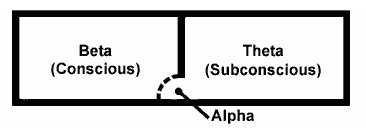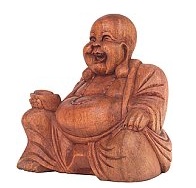For thousands of years, people have created mandalas out
of earth, ink, grains, and flowers. Meaning "circles" in Sanskrit, mandalas
are sacred symbols used for meditation, prayer, healing and art therapy. I incorporate multitudes of mandalas into every piece of art I create. All of my astrological charts and original drawings include unique, intricately constructed mandalas that represent different concepts and altruistic intentions.
 Drawing and tracing repetitive patterns,
especially those containing circles and spirals, creates an altered state of
consciousness that allows us to elevate quickly into Alpha waves. Within this state of mind it is easier to learn new information and change old
habits. Recent medical studies have
proven that drawing mandalas boosts the immune system, reduces stress and physical
pain, lowers blood pressure, promotes sleep and eases depression. When we
engage in this type of meditation we teach our bodies and minds a new consciousness,
in which we are empowered to heal our physical bodies and demolish negative
mental patterns. Carl Jung viewed the
mandala as "a representation of the unconscious self" and used them
in art therapy to identify emotional discorders and inner aspirations.
Drawing and tracing repetitive patterns,
especially those containing circles and spirals, creates an altered state of
consciousness that allows us to elevate quickly into Alpha waves. Within this state of mind it is easier to learn new information and change old
habits. Recent medical studies have
proven that drawing mandalas boosts the immune system, reduces stress and physical
pain, lowers blood pressure, promotes sleep and eases depression. When we
engage in this type of meditation we teach our bodies and minds a new consciousness,
in which we are empowered to heal our physical bodies and demolish negative
mental patterns. Carl Jung viewed the
mandala as "a representation of the unconscious self" and used them
in art therapy to identify emotional discorders and inner aspirations.Benefits of Alpha Waves
from http://www.power-of-visualization.com/alpha-waves.html
 There are
numerous benefits to consciously experiencing alpha waves.
There are
numerous benefits to consciously experiencing alpha waves.They include:
1) Better access to subconscious mind
For our purposes, the most important benefit of Alpha
Waves are that
they give us direct access to the
subconscious mind, which is
absolutely perfect for Creative Visualization.When we are in Beta, we have very limited access to our subconscious. Viualization here doesn't really work.
Our only other alternative is to drop down into Theta Waves (which we enter when we are dreaming), but it is VERY DIFFICULT to stay conscious in this state. More likely, you'll simply fall asleep.
Therefore, Alpha Waves are perfect - plus, they act as the "bridge" between your conscious & subconscious mind.

If you can learn to produce Alpha Waves whilst remaining conscious, you will be able to make profound & lasting changes to your subconscious mind & self-image - all from the comfort of your home!
2) The Relaxation Response
The Relaxation Response was discovered by Dr Herbert
Benson from Harvard Medical School,
whilst studying top performers. He wanted to
see why they remain cool under pressure.
He
found that an ability to access The Relaxation Response -
characterised by alpha brain waves ...
... was massively beneficial to the body & mind;
and not just when under stress, but at any time.
characterised by alpha brain waves ...
... was massively beneficial to the body & mind;
and not just when under stress, but at any time.
Some of the major benefits, reported in Michael Hutchison's excellent book Megabrain, include a reduction in heart rate, blood pressure & sweating ...
 ... combined
with a greater
functioning
of the digestion system, deeper
relaxation of muscles, & an increase in the percentage of oxygen
&
blood flowing to the brain.
... combined
with a greater
functioning
of the digestion system, deeper
relaxation of muscles, & an increase in the percentage of oxygen
&
blood flowing to the brain.Additionally, people who can access this state tend to demonstrate superior performance on both physical and mental tests.
For Visualization, triggering The Relaxation Response leads to far superior results. And it feels rather delightful, too.
3) Pure Pleasure
 Luckily, accessing
Alpha Waves feels really good too - and is massively beneficial for
body and mind.
Luckily, accessing
Alpha Waves feels really good too - and is massively beneficial for
body and mind.
Dr Margaret Patterson & Dr Ifor Capel, of the Marie Curie Cancer Foundation Research Group, conducted a study on Alpha Waves.
The results were kinda staggering ...
They found that consciously accessing
Alpha Waves increases production of
serotonin, a "happy chemical" which increases
relaxtion & reduces
pain.
Additionally, Alpha Waves boost production of catecholamines which are vital to memory & learning.
So,
in short, Alpha Waves help you to:Additionally, Alpha Waves boost production of catecholamines which are vital to memory & learning.
 connect -
and communicate with -
your subconscious mind connect -
and communicate with -
your subconscious mindWhich, all in all, is not a bad list of "pros"…! |
The Mandala as a Spiritual Vehicle
information sourced from Wikipedia
The term
"Mandala" is of Hindu origin. In Hinduism, mandalas or yantras
function as revelatory symbols of cosmic truths and as instructional charts of
the spiritual aspect of human experience; nondual realities in and of
themselves. In various spiritual
traditions, mandalas may be employed for focusing attention of aspirants and
adepts, as a spiritual teaching tool, for establishing a sacred space, as an
aid to meditation and trance induction.In Vajrayana Buddhism the mind is viewed as "a microcosm representing various divine powers at work in the universe." The mandala represents the nature of experience, and the subtleties of both the enlightened and confused mind. The mandala is regarded as a place separated and protected from the ever-changing and impure outer world of samara (cycle of suffering) and is thus seen as a "Buddhafield" or a place of Nirvana and peace. In this tradition of Biddhism the greatest protection from suffering isthe power to see ignorance and confusion as the "shadow" of purity (which then points towards it). Each Buddha has his/her own mandala, mantra, and specific liturgy for worship.
A mandala can also represent the entire universe, which is traditionally depicted with Mount Meru as the axis mundi in the center, surrounded by the continents.
Mandalas are commonly used by tantric Buddhists as an aid to meditation. The mandala is "a support for the meditating person", something to be repeatedly contemplated to the point of saturation, such that the image of the mandala becomes fully internalised in even the minutest detail and can then be summoned and contemplated at will as a clear and vivid visualized image.

By visualizing "pure
lands", one learns to understand experience itself as pure, and as
the abode of enlightenment. The protection that we need, in this view, is from
our own minds, as much as from external sources of confusion. In many tantric
mandalas, this aspect of separation and protection from the outer samsaric
world is depicted by "the four outer circles: the purifying fire of
wisdom, the vajra circle, the circle
with the eight tombs, the lotus circle." The ring of vajras forms a
connected fence-like arrangement running around the perimeter of the outer
mandala circle.
Representing the universe itself, a mandala is both the microcosm and the macrocosm, and we are all part of its intricate design. The mandala is more than an image seen with our eyes; it is an actual moment in time. It can be can be used as a vehicle to explore art, science, religion and life itself. The mandala contains an encyclopedia of the finite and a road map to infinity.
 In
the book Mandala: Journey to the Center, Baily Cunningham, declares, "The
In
the book Mandala: Journey to the Center, Baily Cunningham, declares, "The integrated view of the world represented by the mandala, while long embraced by some Eastern religions, has now begun to emerge in Western religious and secular cultures. Awareness of the mandala may have the potential of changing how we see ourselves, our planet, and perhaps even our own life purpose."
The Wisdom of Color and Form
Hungarian mandala artist, Liza Edit Bozó, writes, "Watching or creating mandalas requires our ability to connect to our intuitive and intellectual self, to be able to simultaneously use the right and the left hemisphere of our brain. Mandalas help us in this procedure of connecting to ourselves, fine-tuning within."
Keeping this in mind, we must make ourselves keenly aware of the emotions, intuitions and experiences that arise when creating and interpreting our mandalas. The basic colors and shapes we use provide a window into our subconscious and unconscious mind.
When we begin to see our world in simple shapes, we begin to simplify our realities, and heightened awareness comes about in a natural flow. Observing in terms of reduction eliminates superfluous judgment. Allow the potential of basic shapes and colors to open your awareness. Exploring the symbolic meaning of the simple beauty around us will enable a multi-dimensional understanding of our universe.
Here is a list of the meanings of colors and shapes that may arise in your art.
Dot: everything as One, symbol of the Unmanifested
Circle: wholeness, integrity, unity, motion. Circles are often seen as protective symbols.
Horizontal line: divides up from down, the earth and the sky. Maternal energy.
Vertical line: connection between worlds, energy. Divides right and left.
Cross: two lines meet and form a centre. Recognition. The cross is a universal symbol of Life and the Sun. Many cultures have used the cross to symbolize the four seasons, directions, elements, etc. It is the Chinese symbol for Earth; the Christian symbol of the crucifixion of Christ, eternal life, redemption, and faith. The vertical line of the cross is symbolic of the intellect: the active, e male principle. Equilateral crosses symbolize balance, twins and couples, and the union of opposites.
Triangle pointed upwards: aspiration, energies pointing upwards, in the direction of the spiritual sphere, masculine energy
Triangle pointed downwards: aspirations towards the earthly, material sphere, feminine energy
Hexagon: unity spiritual and material aspirations
Hexagram, 6 pointed star: unity of masculine and feminine energies. Used in many pagan, Wiccan, Hindu, Buddhist and Kabbalistic traditions.
Square: stability, limitation, security, and permanence. The four sides of the
square represent quaternary concepts: the elements: air, fire, water, and
earth; the seasons: spring, summer, winter, and fall; the motions: linear,
vibratory, rotary, and mixed
Circle and square together: implementation
of the spirit in the materialOctagon: harmony in human existence
Pentagon: human being brought to perfection
Heptagon: spiritual way
Circle divided to twelve parts: cycle of nature, wholeness
Swastika: Sun, energy, movement of the Universe
Spiral: cyclic movement of nature, dynamics. The two directions of the spiral symbolises the constructive and the destructive aspects
Heptagram, 7 pointed star: Also known as the Fairy Star, Witch's Star, and the Astrologer's Star. The heptagram is used in magic to link the powers of the planets to the Earth.
Octagram, 8 pointed star: The octagram has been associated with the Star of the Magi, a symbol of hope. It is also seen as a symbol of the balance between spirit and matter, the inner and outer bodies, and male and female. To occultists it is a symbol of protection, spiritual enlightenment, and abundance.
Nonagram, 9 pointed star: Represents completion, fulfillment, attainment, intuition, creativity, and the power of dreams and illusions. The points are associated with all groups of nine, for example: the nine internal and external senses: memory, meditation, imagination, common sense, hearing, smell, sight, taste, and touch; and the nine muses.
Red: action,
confidence, courage, vitality
Pink symbolizes: love, beauty
Brown symbolizes: earth, order, convention
Orange symbolizes: vitality with endurance
Black symbolizes: Death, earth, stability
White symbolizes: Purity, Cleanliness
Indigo symbolizes: intuition, meditation, deep
contemplation
Purple symbolizes: Royalty, magic, mystery
Green symbolizes: life, nature, fertility, well
being
Yellow symbolizes: wisdom, joy, happiness,
intellectual energy
Gray symbolizes: Sorrow, security, maturity
Exceptional Patterns found in sacred geometry:
Sri Yantra: sacred instrument or Sri Chakra ("sacred wheel") or Mahameru is a yantra formed by nine interlocking triangles that surround and radiate out from the central point, the junction point between the physical universe and its unmanifest source. It represents the goddess in her form of Shri Lalita Or Tripura Sundari "the beauty of the three worlds (Heaven, Earth, Hell)".
Flower of Life: geometrical shape composed of multiple evenly-spaced, overlapping circles arranged in a flower like pattern with six fold symmetry like a hexagon. Pagans consider it to be sacred geometry containing ancient religious value depicting the fundamental forms of space and time. In the pagan sense, it is believed to contain a type of Akashic Record of basic information of all living things and is the visual expression of the connections of life that run through all sentient beings.

Seed of Life: formed from seven circles being placed with sixfold symmetry, forming a pattern of circles and lenses, which acts as a basic component of the Flower of Life's design. According to some, the seed of life depicts the 7 days of creation in which God created life.
Tree of Life: a common motif in various world theologies, mythologies, and philosophies. It alludes to the interconnection of all life on our planet and serves as a metaphor for common descent in the evolutionary sense. Jewish mystics depicts the Tree of Life in the form of ten interconnected nodes, as the central symbol of the Kabbala. It comprises the ten Sephirot powers in the Divine realm.
Here are some examples of my mandalas interspersed with those of other artists who inspire me. The amazing flower petal mandalas are by Kathy Klein (sourced via Pinterest)
HERE ARE SOME GREAT COLORING PAGES FOR SEEKERS OF ALL AGES.





















No comments:
Post a Comment